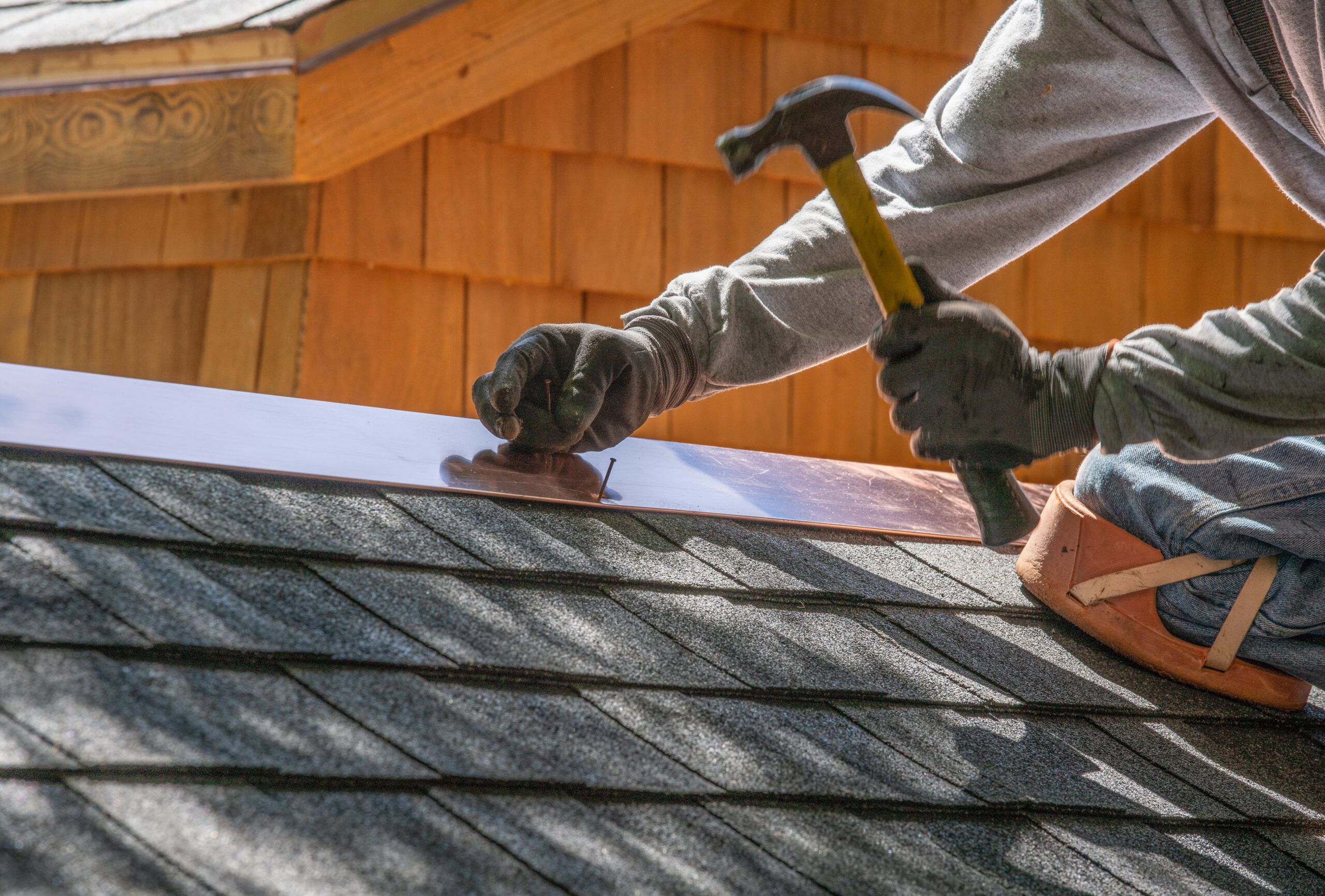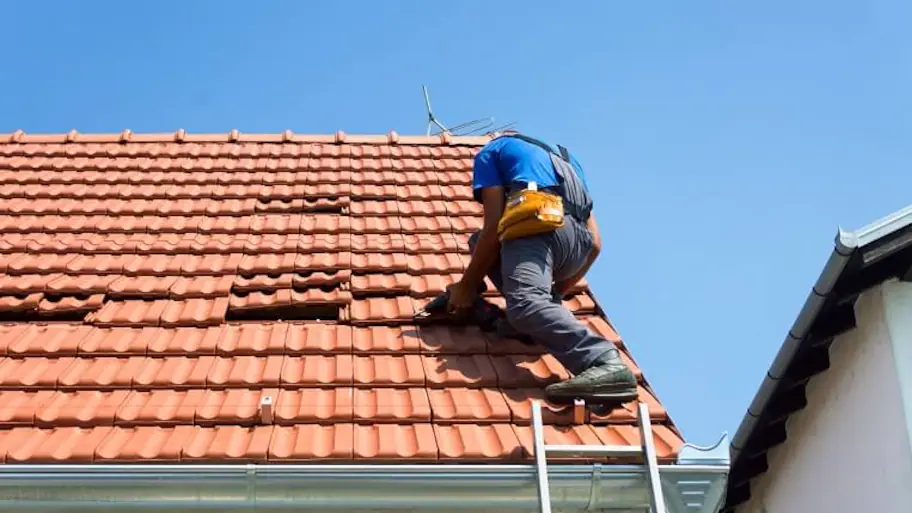Roof Repair Oahu: Specialist Roof Services for Lasting Security
Roof Repair Oahu: Specialist Roof Services for Lasting Security
Blog Article
Discovering the Different Types of Roof Coverings: Which One Is Ideal for Your Home?
When considering the myriad kinds of roof coverings readily available, it is essential to evaluate just how each alternative aligns with your home's distinct requirements, consisting of climate conditions, aesthetic choices, and architectural capability. From the traditional gable roof that effectively channels rain to the modern level roofing offering city flexibility, each style provides unique benefits and challenges.
Gable Roofing Systems
Saddleback roofs, identified by their triangular form and sloping sides, are a prominent option among house owners looking for both visual allure and performance. This roof covering design effectively permits effective water drainage, reducing the danger of water pooling and succeeding damage. In addition, the steep slopes produce ample attic area, which can be used for storage and even exchanged living areas.
One of the main benefits of saddleback roofs is their ability to hold up against severe climate condition. The design aids in minimizing wind resistance, making them especially suitable for locations vulnerable to storms. Moreover, gable roofing systems can be constructed making use of a range of materials, including roof shingles, tiles, and metal, giving homeowners with flexibility in design and spending plan.
From a building point of view, gable roofings can boost the visual allure of a home, supplying a traditional and ageless appearance. They can complement numerous architectural designs, from traditional to modern layouts. Nevertheless, it is necessary to take into consideration potential downsides, such as the susceptibility to snow build-up in chillier climates. In general, saddleback roofs continue to be a popular alternative due to their balance of functionality and design, interesting a large range of house owners.
Apartment Roofs
While usually forgotten for more standard roofing designs, level roofings provide distinct benefits that provide to details architectural demands and modern design preferences. These roofing systems are characterized by their very little pitch, permitting effective usage of room, particularly in urban settings where making best use of square footage is necessary.
One significant benefit of flat roof coverings is their adaptability. They can be made use of as extra living areas, such as roof yards, patios, or photovoltaic panel setups, boosting the functionality of a home. Moreover, flat roofing systems are commonly much easier and much safer to navigate throughout maintenance, facilitating fixings and inspections without the challenges positioned by high slopes.
Level roof coverings can likewise be extra affordable in regards to products and setup. With a less complex layout, they often require less resources, equating right into reduced labor costs. However, it's vital to think about drainage and waterproofing, as flat roofings can be vulnerable to merging water if not properly created.

Hip Roofing Systems
Hip roofings stand out for their elegant layout and architectural stability, making them a preferred choice among home owners. Defined by slopes on all 4 sides, hip roof coverings give a healthy aesthetic that enhances different architectural styles - roof repair oahu. The in proportion nature of these roofs aids to distribute weight uniformly, boosting stability and sturdiness
Among the key advantages of hip roofs is their ability to withstand severe climate condition. The sloped surface areas assist in efficient water drain and snow overflow, lowering the threat of leakages and structural damages. Furthermore, the style minimizes wind resistance, making hip roof coverings less at risk to wind uplift compared to various other roof covering kinds.


Lost Roof Coverings
Shed roofs, as opposed to the complexity of hip roofings, offer a streamlined and minimalist design that attract modern-day appearances. Defined by a single sloping surface area, shed roofs are commonly utilized in contemporary design, yard sheds, and various other functional frameworks. This simplicity not just boosts visual allure but also allows for effective water drainage, making them suitable for different climates.
One of the primary benefits of shed roofing systems is their cost-effectiveness. With fewer products called for and a straightforward setup procedure, property owners can save both time and money. The style also permits the consolidation of big home windows or skylights, advertising natural light and creating spacious insides.
Nonetheless, it is necessary to take into consideration the potential downsides, consisting of minimal insulation choices and the need for mindful layout to prevent extreme heat buildup. Additionally, lost roofs might not blend seamlessly with typical architecture, which might be a problem for some house owners.
Ultimately, dropped roofs provide a fashionable and sensible roof covering solution for those looking for modernity and performance. When picking a roof covering type, assessing personal visual preferences and practical needs will direct home owners to the finest choice for their distinct needs.
Mansard Roofing Systems
Mansard roofs, identified by their unique four-sided design, are a hallmark of French design that integrates elegance with performance. This architectural design features 2 roofers oahu slopes on each side, with the lower slope being steeper than the upper one. The one-of-a-kind arrangement enables additional living space in the top levels, making it an optimal selection for home owners seeking to make best use of usable area without expanding the structure's footprint.
Among the significant advantages of a mansard roof is its convenience. It can be adjusted to different building designs, from traditional to modern-day, enhancing the visual appeal of any type of home. Furthermore, the enough space produced under the roof can quickly fit dormer windows, which permit for all-natural light and ventilation, more improving the comfort of the living area.
Nonetheless, possible home owners must take into consideration the upkeep needs associated with mansard roofings. Setup prices may be higher contrasted to easier roofing system layouts due to the complexity of building.
Verdict
Each roofing style presents one-of-a-kind advantages, such as the efficiency of gable roof coverings, the modern-day charm of shed roof coverings, and the stability of hip roof coverings. Flat roofings provide usefulness for city atmospheres, while mansard roofings provide additional living space in spite of greater installment prices.
From the traditional gable roof that effectively networks rainwater to the modern level roofing system offering urban flexibility, each style offers distinctive advantages and difficulties (roof repair oahu). Additionally, the design decreases wind resistance, making hip roofing systems less at risk to wind uplift contrasted to other roofing kinds
Dropped roof coverings, in contrast to the complexity of hip roofings, provide a minimal and structured style that appeals to modern visual appeals. Each roofing style provides unique benefits, such as the performance of gable roof coverings, the modern-day appeal of shed roofings, and the stability of hip roof coverings. Flat roofs provide practicality for metropolitan settings, while mansard roofs offer added living room regardless of greater installation costs.
Report this page